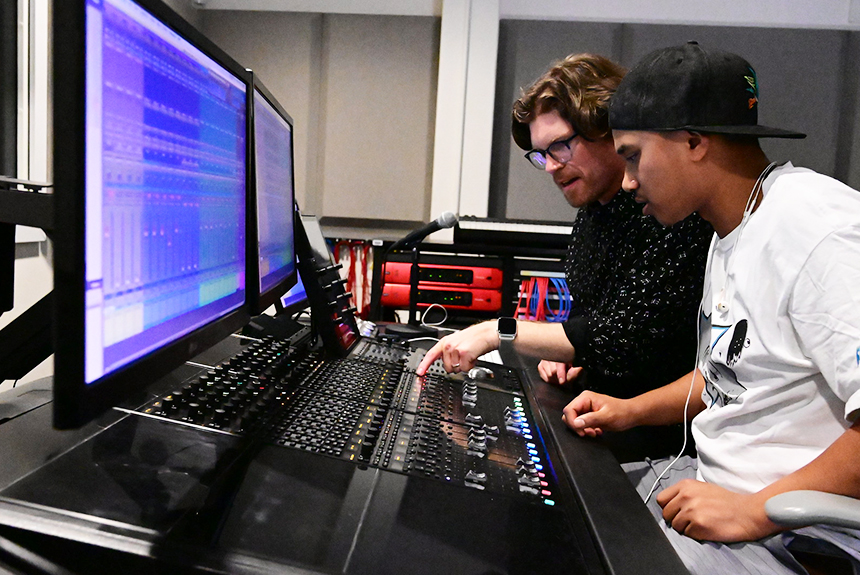When you look at the opening scene of Pirates of the Caribbean, you might notice the sea, the not-so-magnificent vessel, or the movie star at the helm.
Mike Espar, though, takes note of the music and its dramatic and – sometimes unexpected – effect on what the viewer sees and feels.
That’s because the associate professor blends his own first love, music, with another of his interests, film and television, a product of his parents’ influence. Both have shaped his approach to teaching students about songs and how they weigh on the viewer’s experience.
Espar, who co-directs the City College Music Program while also leading the World Cultures Program, calls film and television “always kind of the family business,” but said “music was always my true passion.”
“Combining the two, I felt, was kind of my niche,” he said.
Initially, though, after graduating from Yale University, he focused on the visuals, working with television companies such as HBO and Nickelodeon. But more and more, Espar found himself drawn to composers on his productions. It made him realize, “This is the person who has the most exciting job on the whole project. I want to do what he is doing.”
With that he returned to school, attending New York University for graduate studies in music composition and scoring.
But it’s not just about the music for Espar – technology and psychology feed into the mix as well.
For instance, as a youngster growing up in Palo Alto, he learned that by using recording software he could “be a whole band by myself” if friends couldn’t make it to jam with him. Then in college, psychology courses helped him see the opportunity to draw an emotional response from viewers.
The approach has served him on a range of projects. His music has been featured in productions that aired on truTV and HBO, others that screened at prominent film festivals, including Sundance, and in commercials for clients such as Fruit of the Loom and Levis.
He also embraced teaching while back east, starting out as an adjunct at City University of New York before looking for the opportunity not only to teach full time, but also to move back to California.
His varied career path and approach to music can serve as an example to students, whether they are interested in composing their own works, creating sound design for productions or even scoring video games, he said. He and Music co-director Bob Kostlan also have re-shaped the program’s degree curriculum. It now will include courses not only on music and recording technology, but also about music marketing and entrepreneurship to better prepare students for the industry.
“I’m always trying to encourage them to draw on past experiences,” he said. “There’s no single path to be where you want to be in the music industry.”
###
Established in 1914, San Diego City College serves as the educational cornerstone of downtown San Diego. A 60-acre urban campus, City College serves more than 16,000 students, offering 200 majors and degrees and 1,800 classes. City College is part of the San Diego Community College District (SDCCD), the second-largest of California’s 72 community college districts, which also includes Mesa College, Miramar College, and Continuing Education. For more information, visit www.sdcity.edu.
Contact: Cesar Gumapas, Information Officer at 619-388-3911 or [email protected]

